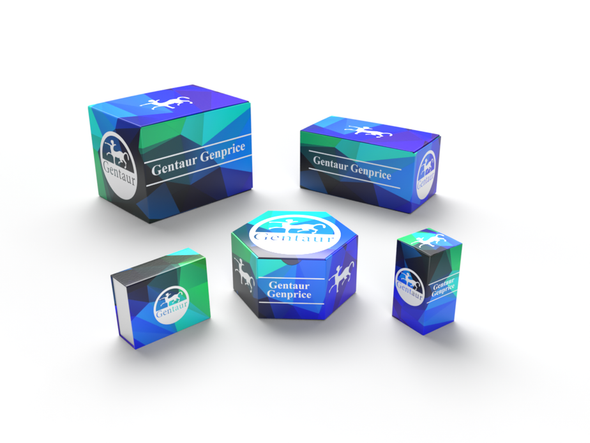Description
MC1R Antibody | 18-904 | Gentaur UK, US & Europe Distribution
Host: Rabbit
Reactivity: Human, Mouse
Homology: N/A
Immunogen: Recombinant protein of human MC1R
Research Area: Neuroscience, Signal Transduction
Tested Application: WB, IHC
Application: WB: 1:1000 - 1:2000
IHC: 1:50 - 1:200
Specificiy: N/A
Positive Control 1: M21
Positive Control 2: MCF7
Positive Control 3: SW620
Positive Control 4: 22Rv1
Positive Control 5: Raji
Positive Control 6: Mouse testis
Molecular Weight: Observed: 37kDa
Validation: N/A
Isoform: N/A
Purification: Affinity purification
Clonality: Polyclonal
Clone: N/A
Isotype: IgG
Conjugate: Unconjugated
Physical State: Liquid
Buffer: PBS with 0.02% sodium azide, 50% glycerol, pH7.3.
Concentration: N/A
Storage Condition: Store at -20˚C. Avoid freeze / thaw cycles.
Alternate Name: CMM5, MSH-R, SHEP2, melanocyte-stimulating hormone receptor, MC1-R, alpha melanocyte stimulating hormone receptor, melanotropin receptor
User Note: Optimal dilutions for each application to be determined by the researcher.
BACKGROUND: This intronless gene encodes the receptor protein for melanocyte-stimulating hormone (MSH) . The encoded protein, a seven pass transmembrane G protein coupled receptor, controls melanogenesis. Two types of melanin exist: red pheomelanin and black eumelanin. Gene mutations that lead to a loss in function are associated with increased pheomelanin production, which leads to lighter skin and hair color. Eumelanin is photoprotective but pheomelanin may contribute to UV-induced skin damage by generating free radicals upon UV radiation. Binding of MSH to its receptor activates the receptor and stimulates eumelanin synthesis. This receptor is a major determining factor in sun sensitivity and is a genetic risk factor for melanoma and non-melanoma skin cancer. Over 30 variant alleles have been identified which correlate with skin and hair color, providing evidence that this gene is an important component in determining normal human pigment variation.









![MC1R Antibody (Center) [APR08361G] MC1R Antibody (Center) [APR08361G]](https://cdn11.bigcommerce.com/s-1rdwiq712m/images/stencil/590x590/products/54626/463798/gentaur-genprice__26005.1661610467__29809.1661628092__75433.1661676199__77988.1661684280__64362.1661692443__02085.1662049603__45075.1662119302__91744.1662191540__21580.1662291419__67936.1663322628.png?c=1)
